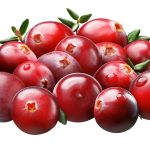Understanding Versatile Scarves for UK Weather
The unpredictable UK weather demands adaptability in fashion choices, especially when it comes to versatile scarves. Selecting the right scarf isn’t just about warmth or aesthetics; it also plays a crucial role in navigating the frequent weather changes. Scarves that offer versatility enable you to effortlessly transition from a chilly morning to a warmer afternoon, enhancing your personal style without compromising on comfort.
When choosing a scarf, consider its fabric, which is essential for versatility. Wool scarves offer excellent warmth and are perfect for colder conditions, while lightweight cotton or linen variations keep you comfortable when temperatures rise. Such adaptability ensures that your fashion remains both functional and stylish regardless of the weather.
Also read : Mastering the Art of Spring Layering: Your Ultimate Guide to Dressing for a British Transitional Season
Moreover, versatile scarves can elevate your personal style. A well-chosen scarf adds a splash of colour or texture to an outfit, allowing for unique expression and making casual attire appear more sophisticated. This adaptability not only keeps you comfortable but also aligns with the everchanging weather conditions in the UK.
In conclusion, a keen eye for versatility in scarves will ensure you’re always prepared and stylish, ready for whatever the British skies may bring.
In the same genre : Ultimate handbook for choosing the perfect leather gloves to thrive in a british winter
Selecting the Right Scarf
Choosing the ideal scarf involves more than just style—consideration of materials, weight, and design plays a critical role.
Fabric Types
When selecting a scarf, the material is paramount. Wool is a top choice for warmth, making it suitable for chilly weather. Cashmere offers luxury and insulation, ideal for both casual and sophisticated looks. Meanwhile, cotton is a breathable option, perfect for milder climates. Each fabric has unique properties that should match the intended weather conditions and personal comfort needs.
Weight and Thickness
The weight and thickness of a scarf significantly influence its effectiveness. In colder months, opt for thicker scarves that provide extra warmth and comfort. For transitional seasons or indoors, lighter scarves that offer a subtle layer can be practical and stylish. Balancing between the scarf’s heaviness and the ambient temperature ensures maximum utility and comfort.
Color and Pattern
Color and pattern choice can elevate your wardrobe. Neutral shades such as black, grey, or beige blend seamlessly with various outfits. Meanwhile, vibrant colours and dynamic patterns add a splash of personality and style. Selecting scarves that complement existing attire ensures they are versatile and can be worn confidently and frequently.
Styling Techniques for Scarves
Scarves are versatile fashion accessories that can dramatically enhance any outfit. Learning different methods of scarf styling can transform even the simplest attire into a chic look. One popular technique is the loop knot, which is achieved by folding the scarf in half, looping it around the neck, and pulling the ends through the loop. For a more elegant style, the bow tie method is perfect: simply drape the scarf around your neck and tie it in a bow.
Layering scarves creatively with clothes can boost your style game. Pairing a lightweight scarf with a blazer creates a sophisticated yet approachable ensemble, while layering a thick scarf over a coat provides warmth and texture.
When it comes to incorporating scarves into varying wardrobe choices, versatility is key. For everyday wear, consider bright, patterned scarves to add personality to casual outfits. In contrast, opt for silk or cashmere scarves in muted tones for formal wear, ensuring a touch of elegance without overpowering the attire.
Experimenting with scarf styling not only adds flair but also offers practical benefits, such as warmth or sun protection, making them a staple in both casual and formal wardrobes.
Trends in Scarf Fashion
Scarves are transcending their traditional functional role to become pivotal in UK fashion. This year, trending scarves can be seen everywhere, from high streets to fashion runways. These versatile accessories are proving essential for those aiming to enhance their style effortlessly.
Current Scarf Trends
This season, the most sought-after scarves include bold geometric patterns, colourful fringed designs, and luxurious cashmere pieces. These styles allow fashion enthusiasts to express individuality while staying on trend.
Celebrity Influences
Celebrities continue to significantly impact scarf trends, often sparking new styles. Icons like Emma Watson and Harry Styles have been spotted donning vivid scarves, sparking increased demand for similar styles among fans.
Seasonal Adaptations
Seasonal changes also dictate scarf styles. In the chillier months, thicker materials such as wool and fleece are favoured to provide warmth. As spring approaches, lighter fabrics like silk and cotton gain popularity. This is where versatility shines, allowing scarves to be tailored to various occasions and climates.
Whether it’s through geometric patterns, celebrity-inspired looks, or seasonally appropriate materials, scarves are evolving to reflect personal style in the ever-changing world of UK fashion.
Maintenance and Care for Scarves
Proper scarf care is essential to maintain their quality and longevity. Start by understanding the best practices for washing scarves. It’s generally recommended to hand wash scarves in cold water using a mild detergent. This prevents damage and preserves the fabric’s colour and texture. If machine washing is necessary, use a gentle cycle and place the scarf in a delicates bag for extra protection.
Storing scarves properly is equally important. Ideally, scarves should be hung or loosely folded to prevent creasing. Consider using padded hangers or scarf organisers to avoid stretching or fabric distortion. When storing for the long term, ensure they’re kept in a cool, dry place away from direct sunlight.
Removing stains from scarves involves acting quickly. Blot, do not rub, the stain with a clean cloth. Use a mild stain remover, applying it gently. Always test on a small area first. If unsure, professional cleaning is advisable.
Investing time in scarf maintenance ensures lasting quality. Proper care prevents wear and tear, allowing you to enjoy your scarves for years. Treating your scarves delicately enhances their durability and aesthetic appeal, making them a continual fashion staple.
Accessorizing with Scarves
Scarves are versatile accessories that can complete your look with flair and style.
Complementing Outfits
One of the easiest ways to elevate your ensemble is by incorporating a scarf. Whether draped over your shoulders or casually looped, it can add a pop of colour or texture. Opt for patterns that complement the hues in your outfit to create a cohesive appearance. Mixing and matching requires practice, but once mastered, it makes your outfit appear polished and intentional.
Using Scarves as a Statement Piece
A statement scarf can instantly become the focal point of your attire, transforming even the simplest outfit into something special. Bold prints or bright colours can draw attention, so balance is essential. When choosing a statement piece, let it speak for itself by keeping other accessories minimal. A perfect choice when you want to make an impression without an entire wardrobe change.
Scarf and Hat Combinations
As the temperature drops, scarves and hats become practical fashion solutions. Coordinating these two accessories can enhance warmth while maintaining style. Choose materials that match the season and ensure complementary colours. For example, pairing a wool scarf with a knitted hat can seamlessly integrate into your winter outerwear collection.










